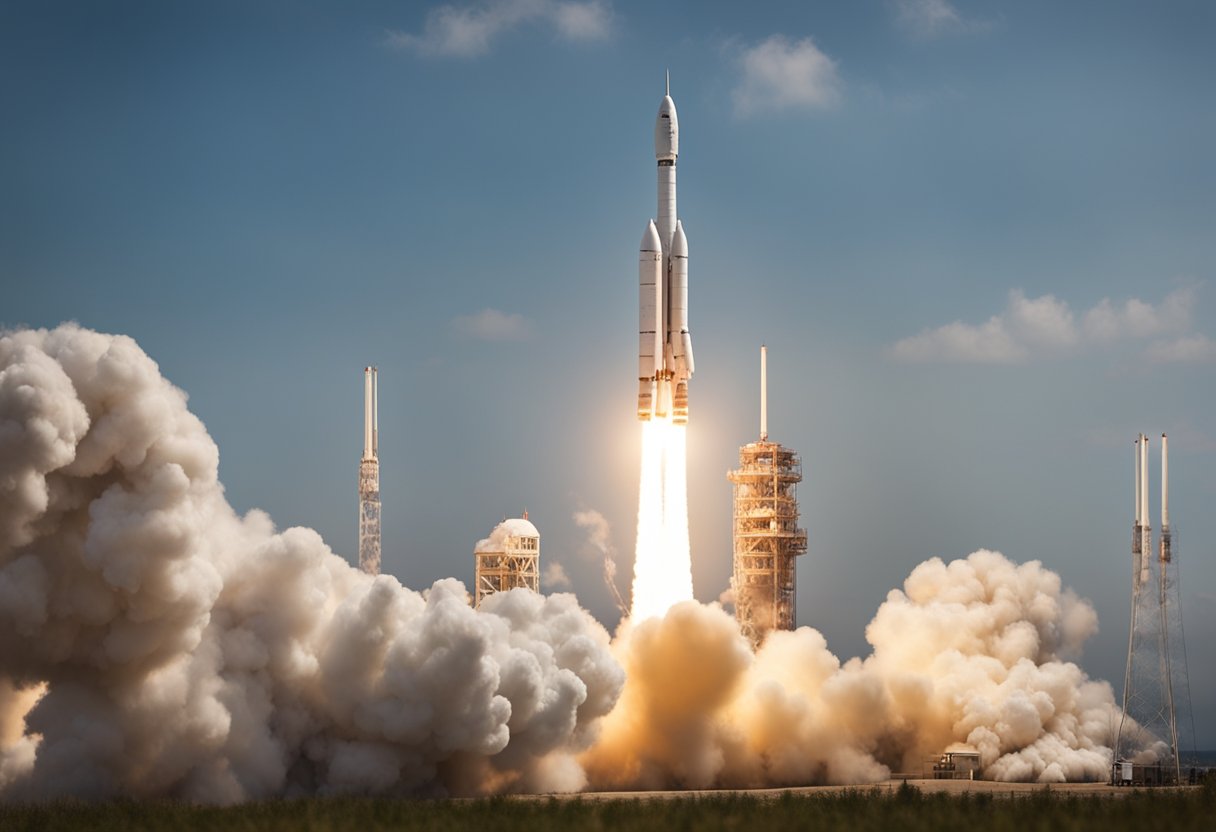
Cultural Significance of Space Exploration – Space exploration has long transcended the confines of scientific endeavour to become a significant cultural force. It’s a realm where the pursuit of knowledge meets the human imagination, forging new narratives and symbols that resonate deeply with societies around the globe. Our fascination with the night sky has written itself into our history, influencing art, philosophy, and culture. As we’ve observed and participated in milestones of space travel, these moments have become shared experiences that mirror our collective ambitions and fears.
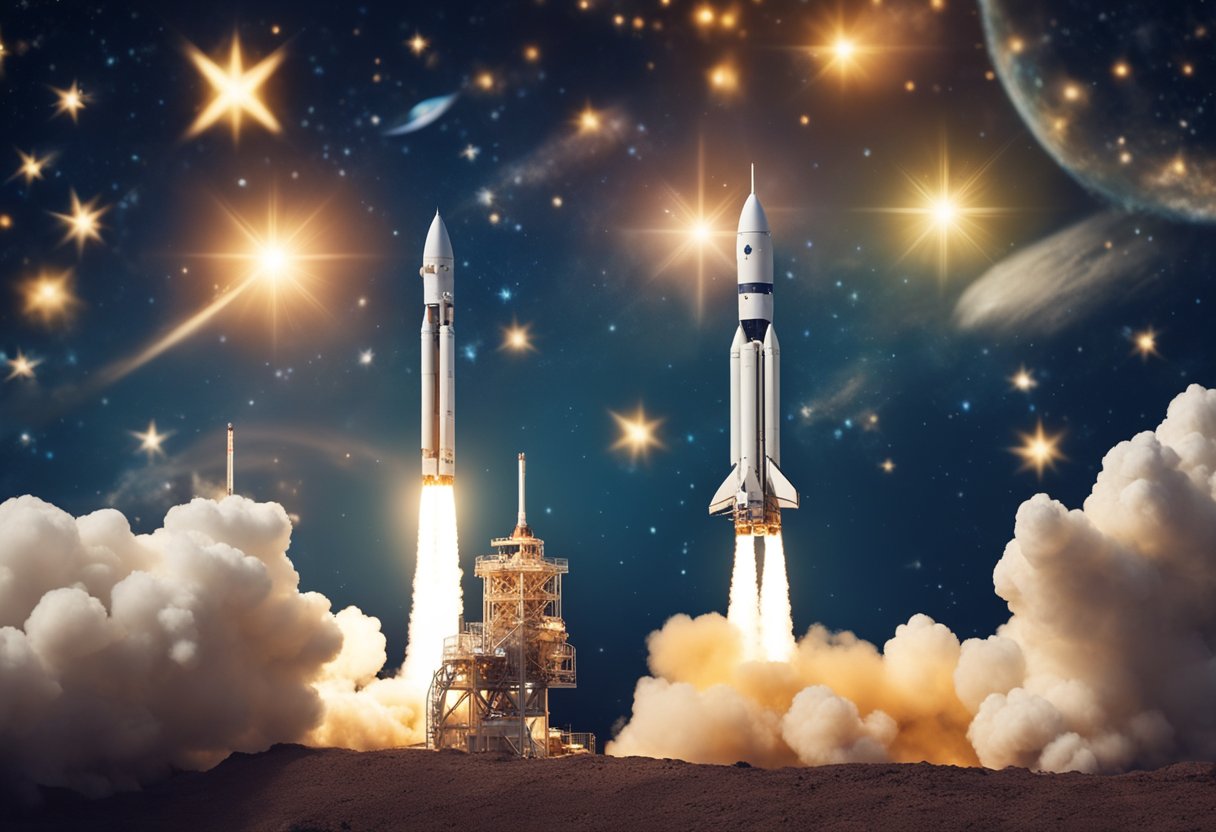
Our interactions with space have sparked an unparalleled influence on science, technology, and the creative arts, shaping new cultures and subcultures dedicated to the cosmos. The visual of Earth from space, for instance, has instilled in us a sense of global unity and environmental consciousness. Furthermore, space exploration has not only expanded our scientific knowledge but has also had a considerable economic impact through the development of new industries and technologies. The narrative of space exploration plays out as one of humanity’s grandest adventures, uniting us in wonder and ambition.
We must first acknowledge the pivotal moments that have carved the path for modern space endeavours. These include the intensity of the Cold War competition, which precipitated a race to the Moon, and the monumental lunar landings that followed, leaving a legacy at Tranquility Base.
The era known as the Space Age began in earnest during the Cold War period, as national governments, particularly those of the Soviet Union and the United States, saw the strategic advantage of space. In the aftermath of World War II, our understanding of space exploration took on a new direction, with significant resources devoted to rocketry and the associated technologies.
The Soviet Union’s launch of Sputnik in 1957 shocked the world and marked the official starting line of the Space Race. It was a clear demonstration of the Soviet Union’s spacefaring capabilities and potential military repercussions during a time of geopolitical tension.
On 20th July 1969, we, humans, achieved what was once thought impossible—we set foot on the Moon. The American Apollo 11 mission successfully transported astronauts to the lunar surface, symbolizing a remarkable human achievement and a powerful conclusion to the US-Soviet Space Race. Tranquility Base, where astronauts first landed, now stands as a testament to the ingenuity and ambition fuelled by the history of spaceflight. This event did not only signify a win in the Space Race; it represented a collective leap forward in humanity’s quest for knowledge. It’s a shared history, reminding us that the bounds of our world are not the limits of our capacity for exploration.
As we look towards future prospects of space travel and tourism, such as those documented by SpaceVoyageVentures.com, we carry with us the lessons and legacy of these historical milestones in space exploration.
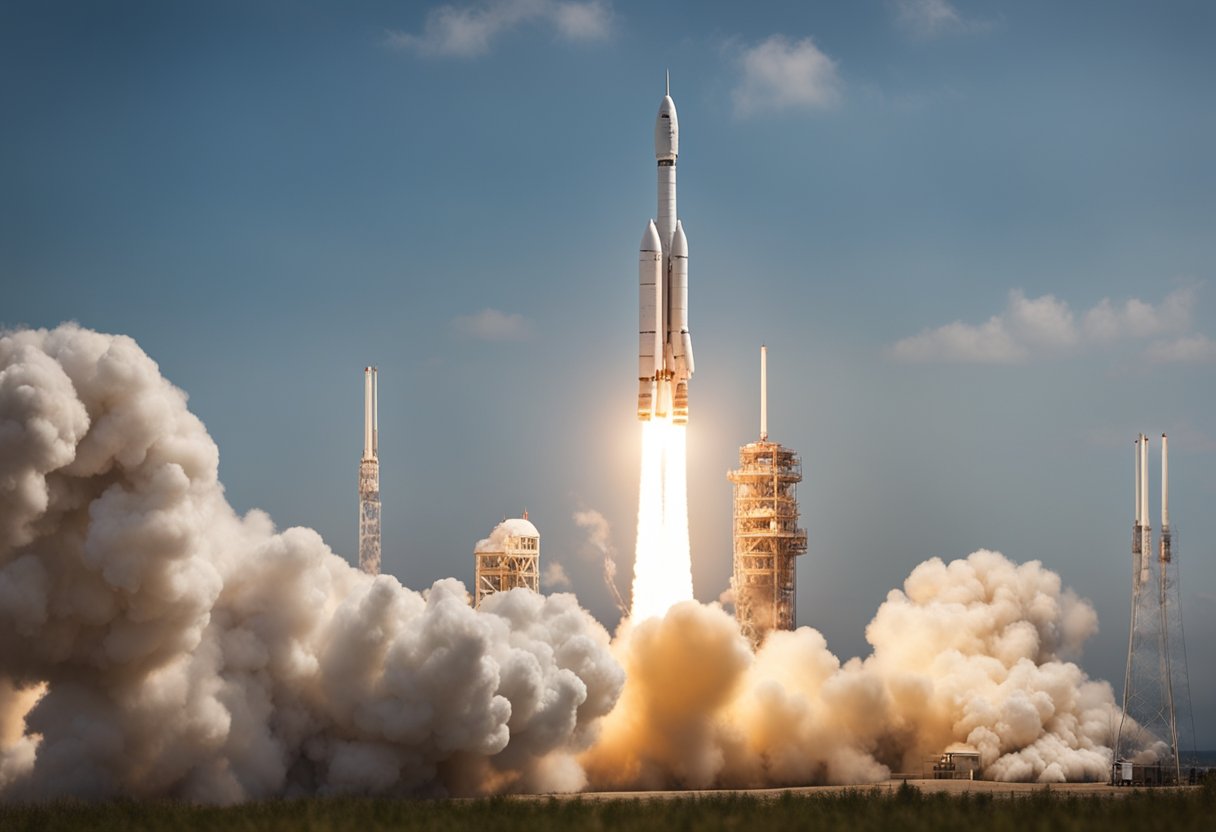
Space exploration has unequivocally fuelled advancements in science and technology, particularly through the development of innovative spacecraft and the insights gleaned from observatories like the Hubble Space Telescope. These contributions have bolstered our understanding of the cosmos and advanced the technical prowess of engineers and scientists.
We have witnessed immense progress in the design and functionality of spacecraft and rockets, which are crucial to the success of space missions. With a thrust towards reusability, engineers have revolutionised rocket technology, thereby reducing costs and increasing access to space. Additionally, the development of sophisticated satellite systems has enabled us to gather, transmit, and process data with heightened efficiency, facilitating a myriad of applications from meteorology to telecommunications.
The Hubble Space Telescope, a joint project between NASA and the European Space Agency, represents a watershed moment in space science. It has not only captured the public imagination with stunning images of the universe but has also played a pivotal role in key discoveries, such as the rate of universe expansion.
The Great Observatories programme, which includes telescopes like Hubble in space, has expanded our astronomical capabilities across various electromagnetic spectra, leading to more comprehensive cosmic exploration. Such observatories have underpinned our understanding of black holes, nebulas, and distant galaxies, painting a more complete picture of our universe’s vast intricacies.
By engaging with SpaceVoyageVentures.com, we’re not just looking forward to the future of space tourism, but we’re also celebrating the technological marvels that have made such dreams plausible.
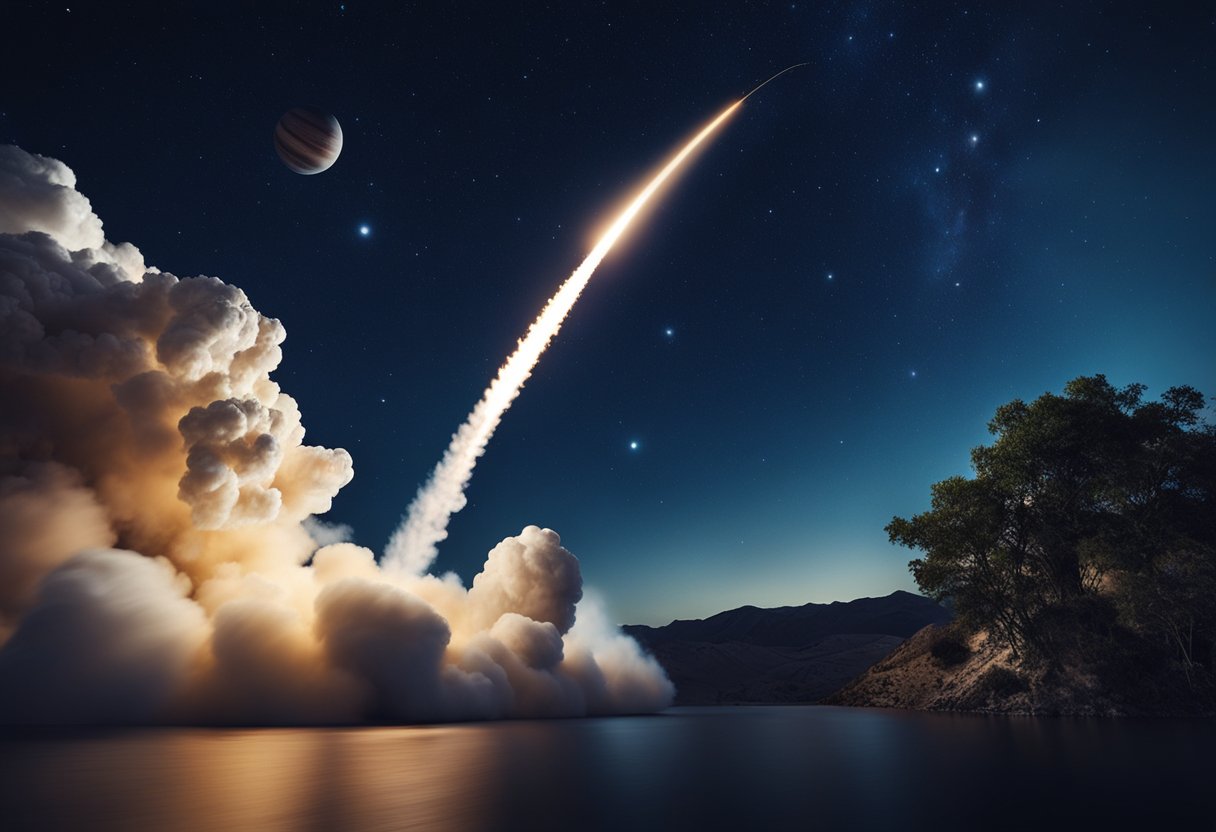
We see the exploration of space as not only a scientific pursuit but also a profound influence on culture and creativity. Our imaginations, fueled by the vastness of the cosmos, have been expressed through various forms of art and media. This has fundamentally shaped cultural narratives and aesthetic sensibilities across the globe.
The allure of space has significantly influenced the genre of science fiction, with films and books often portraying the intrigue of the unknown. Classic films such as 2001: A Space Odyssey and contemporary books like The Martian highlight this fascination. They provide a platform for discussing ethical dilemmas and the human condition through the lens of space travel.
Space exploration has inspired artists to reflect the cosmos in their work, contributing to a unique aesthetic in both art and design. The use of cosmic motifs and space-related themes can be seen in everything from clothing to architecture. We’ve observed that this trend often symbolises hope and progress, artistically representing humanity’s aspirations to explore the universe.
Museums such as the Science Museum in London have dedicated galleries to space exploration, celebrating its impact on society and culture. These exhibitions offer tangible insights into the history and future of space travel. They stimulate our imagination by showcasing artefacts like spacecraft, astronaut gear, and interactive displays. SpaceVoyageVentures.com further reflects this curiosity, providing a glimpse into the burgeoning realm of space tourism and its potential cultural ramifications.
Space exploration has undeniably influenced societal structures, leading to advancements in policy formulation, education, and global collaboration. We shall explore the specific impacts on national and international policies and the education system.
Governments across the globe recognise the importance of space exploration and have developed national policies to govern these activities. Space law, a social construct and a body of regulations that govern space-related activities, plays a critical role in ensuring that the exploration of outer space is carried out for the benefit of all humanity. International collaboration, as seen with the European Space Agency (ESA), has been a testament to our ability to share knowledge and resources in pursuit of common goals.
Publications and treaties such as the Outer Space Treaty solidify these efforts, setting principles for the peaceful use of space that our countries abide by. For instance, historical studies in the societal impact of spaceflight offer extensive insights into how space exploration has shaped international cooperation and policy-making.
Our universities are at the forefront of space exploration, serving as incubators for innovation and research. They often collaborate on projects, sharing findings through academic publications that contribute to the collective understanding of space. This partnership with educational institutions not only fosters a knowledgeable workforce but also stimulates public interest in space science. Programmes designed in partnership with ETF, including space law courses and interdisciplinary studies, reflect the integration of space exploration within our education systems.
Moreover, the potential of space tourism, as documented by platforms such as SpaceVoyageVentures.com, provides case studies that universities utilize to examine the commercial and scientific implications of our foray into space travel.
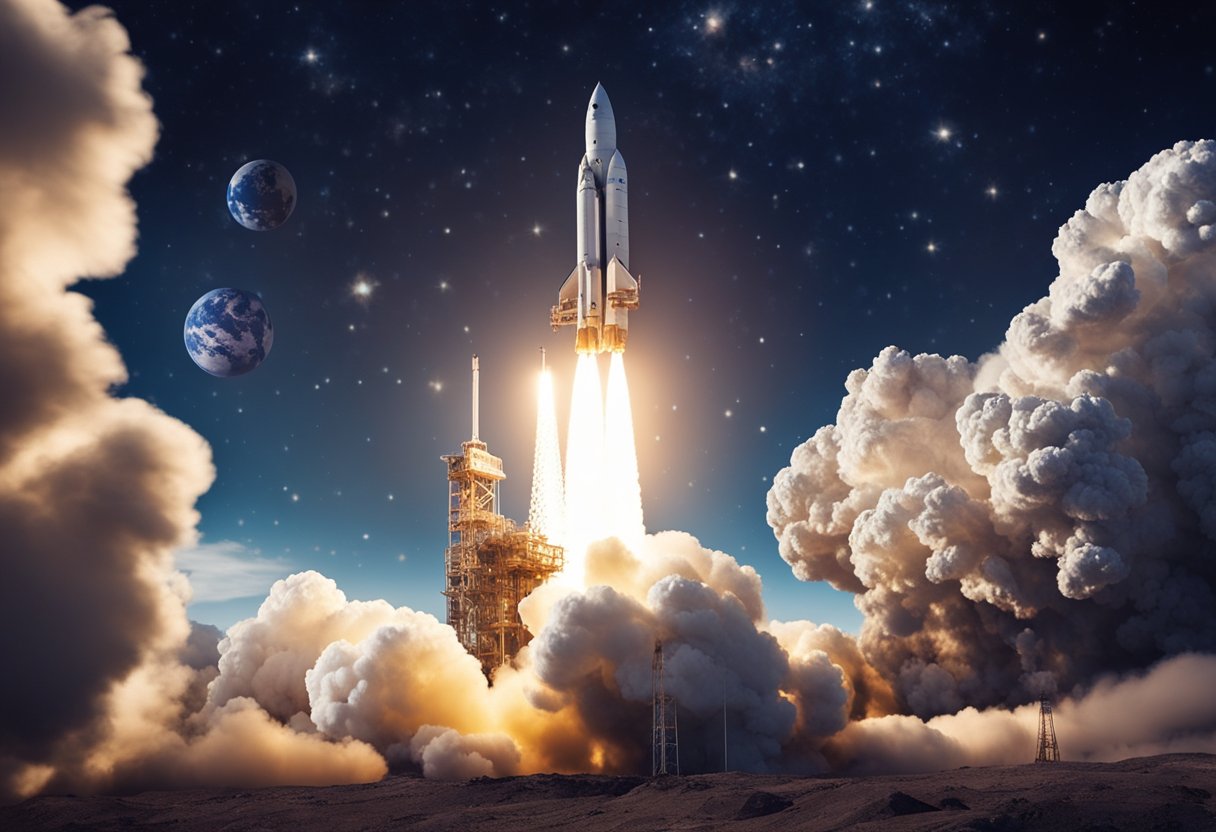
As we explore the milestones in spaceflight, we’ll reflect on a few pivotal achievements that have defined our journey through the cosmos. These moments have not only expanded our understanding of space but have also paved the way for future explorations and potential space tourism, as chronicled on websites like SpaceVoyageVentures.com.
The annals of space exploration are rich with groundbreaking missions. The Sputnik satellite marked the dawn of the space age in 1957, a seminal moment that would lead to humanity’s relentless pursuit of knowledge beyond Earth’s atmosphere. This pursuit saw Yuri Gagarin’s Vostok 1 mission in 1961, making him the first human to journey into space and orbit the planet, an achievement that remains a beacon of human tenacity.
The International Space Station (ISS) represents an unprecedented collaboration in space exploration. Launched into orbit in 1998, the ISS has been a bastion of international partnership, embodying our collective endeavour for scientific advancement. It serves as a microgravity laboratory where numerous countries conduct research that benefits life both in space and on Earth.
The Voyager Program took our ambitions further than ever before. Both Voyager 1 and 2, launched in 1977, have provided invaluable data on our solar system’s outer planets and beyond. Voyager 1’s entry into interstellar space in 2012 stands as one of the most remarkable human achievements; it’s our first emissary into the vast galaxy, still sending signals back to Earth, over 40 years after its voyage commenced.
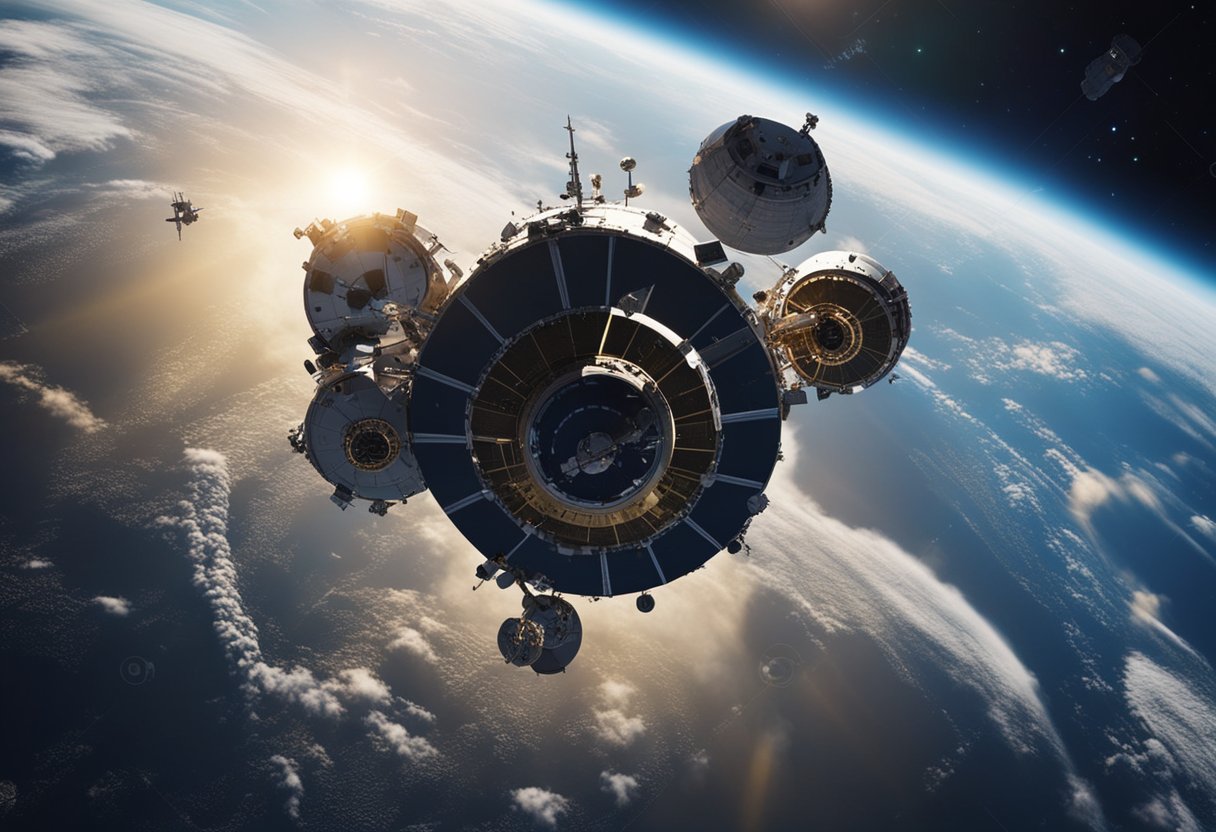
Space activities have transcended national pride to become significant economic engines. Through both state funding and investments and the burgeoning sector of commercial space tourism, these activities are reshaping economies and opening new frontiers for revenue and growth.
We’ve seen governments across the world allocate substantial funds to space programmes, recognising their strategic and economic importance. The European Space Agency (ESA), for instance, has played a crucial role in strengthening European scientific research and the development of advanced technologies. By investing in ESA programmes, public funding has been pivotal in sustaining the competitiveness and growth of the European industrial base, as detailed by the ESA’s analysis on the socio-economic impact.
Furthermore, advancements in technology derived from space exploration, such as GPS and solar panels, have underpinned new industries and services, with NASA documenting over 2,000 spinoff technologies since 1976.
Commercial space tourism is an explosive new industry that beckons tourists to push the envelope of travel to outer space. This sector is still in its infancy but has significant potential for economic growth. Various companies have entered the race to make space tourism a reality, with tickets already sold for suborbital trips.
A glimpse into this future can be found at SpaceVoyageVentures.com, a pioneering website that documents the potential of forthcoming space tourism, including the trips currently or soon-to-be available. This development symbolises a shift from solely state-led space expeditions to private enterprises facilitating tourism, thus expanding the economic reach of space activities.
The pursuit of commercial space tourism also steers the need for novel resource management strategies, as these endeavours require rigorous planning and significant investment, making it integral to shaping a sustainable model for extraterrestrial travel and exploration.
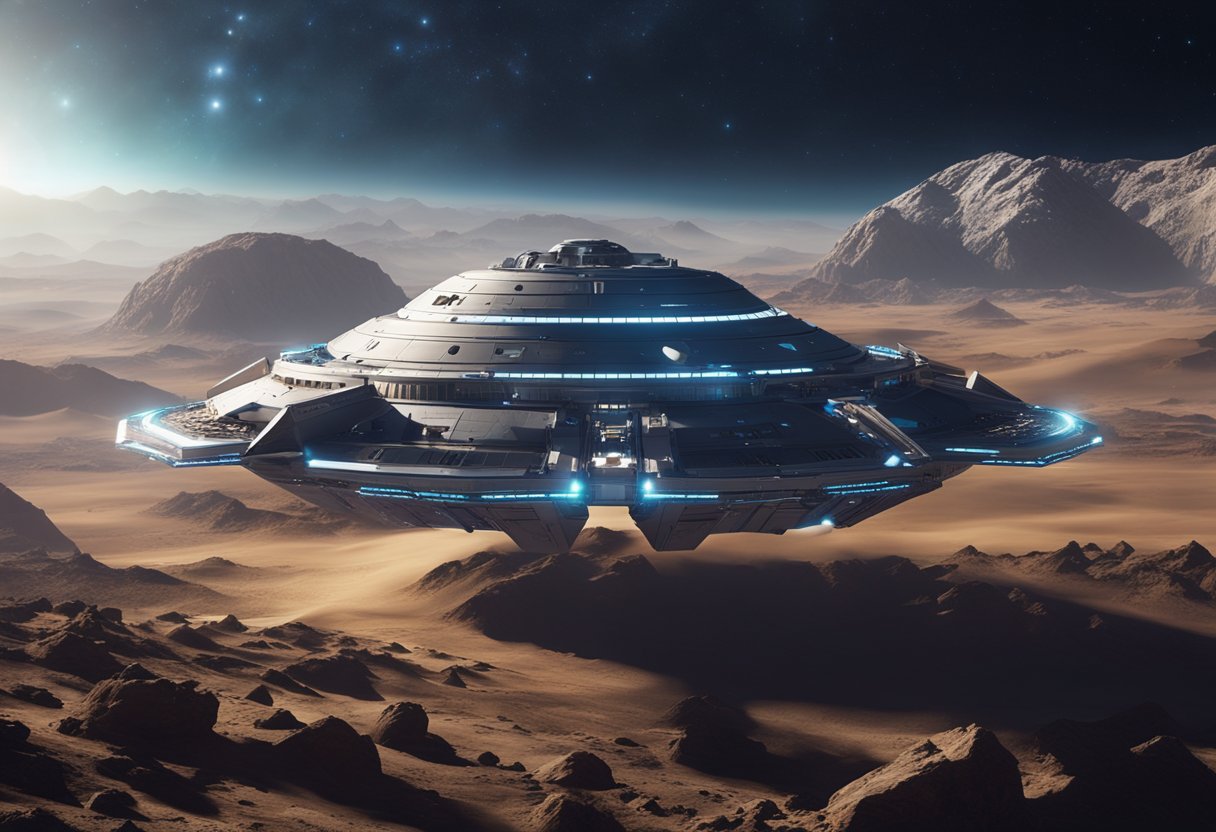
The utilisation of space resources is crucial for sustainable space exploration and development. It encompasses ethical considerations for planetary protection and the tangible prospects for expanding our presence to the Red Planet.
We must approach the discovery and use of extraterrestrial resources with a firm commitment to planetary protection. This principle is designed to prevent the biological contamination of both the space environment and Earth. The Outer Space Treaty, to which numerous countries are signatories, governs our actions by mandating that we avoid the harmful contamination of celestial bodies and also protect Earth’s biosphere from potential extraterrestrial threats.
Fascination with the Red Planet has grown with our understanding of Mars as a viable candidate for colonisation. Space development strategies involve leveraging the Martian surface to harvest critical resources such as water ice, which could be converted into usable water, oxygen, and even rocket fuel. The prospect of establishing a self-sustaining colony on Mars hinges on our ability to responsibly utilise these in-situ resources, reducing the need for supplies from Earth and thus making space travel more economical.
It is through endeavours like the hypothetical offerings of SpaceVoyageVentures.com that we can envisage the commercial and cultural potentials of such unprecedented expansion into space.
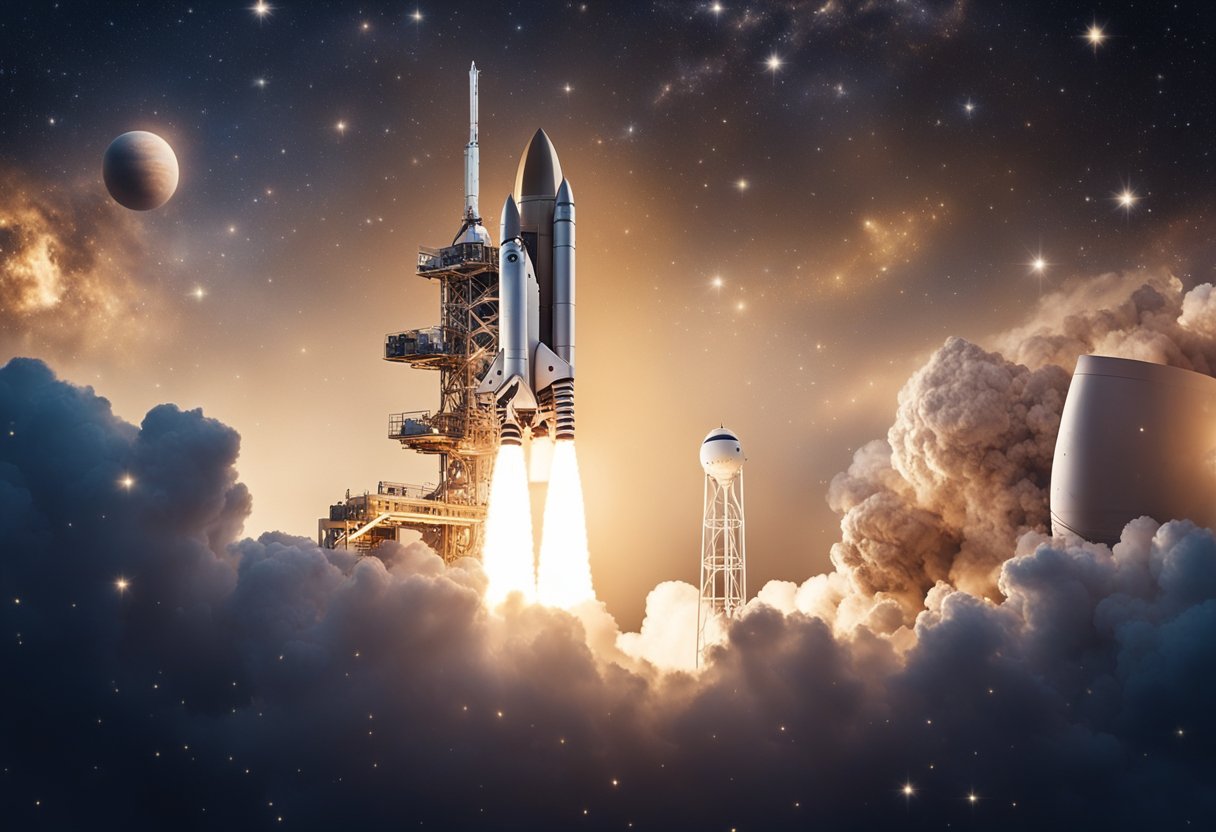
In the realm of space exploration, we’re faced with complex challenges that demand innovative solutions and global cooperation. Our focus here is on the mitigation of space debris and the advancement of navigational systems and satellite technology, both critical to the sustainability and safety of operations in Earth orbit.
Space debris consists of non-operational satellites, spent rocket stages, and fragments from disintegration, erosion, and collisions. In low Earth orbit, these debris pose a significant threat to operational satellites, space stations, and even future space tourism ventures. Clearing space debris is not just a matter of keeping the orbital paths clear; it’s about adhering to responsible space law and ensuring the safety of our endeavours.
Space Debris Counts:
Our navigational capacity in space hinges on the precision and reliability of satellite technology. With the burgeoning realm of space tourism as reported by SpaceVoyageVentures.com, the accurate placement and operation of satellites are more critical than ever. We must invest in robust technologies to safeguard the intricate networks of satellites that provide essential data for navigation and keep a vigilant eye on the harmonisation of international space law to protect our shared interests and assets in Earth orbit.
We recognise that space exploration isn’t just a technical achievement but a deeply human endeavour. Astronauts serve as representatives of humanity, experiencing the vast void of space first-hand and providing insights that echo across our cultures.
During their missions, astronauts’ lives aboard space stations are characterised by strict schedules, which include scientific research, exercise routines, and maintenance tasks. On the International Space Station (ISS), they live in a microgravity environment, which necessitates unique living conditions to accommodate eating, sleeping, and personal hygiene. The presence of facilities like the Cupola module, often referred to as the “window to the world”, allows for breathtaking views of Earth. This aspect of space exploration greatly inspires onlookers from Earth, reminding us of our very own home’s fragility and beauty.
Their time in space is not only a period of work but also an opportunity to engage with fellow astronauts from various countries, fostering a sense of global unity and cooperation. The tranquility and solitude of space station life often lead astronauts to experience profound shifts in perspective, commonly known as the “Overview Effect“—a cognitive shift in awareness reported by some astronauts during spaceflight, often while viewing the Earth from orbit or from the lunar surface.
Certain astronauts have made indelible marks on the path of space exploration. For example, the crew of the Apollo 11 mission, which included the renowned astronaut Neil Armstrong, forever altered history by making the first-ever human landing at Tranquility Base on the Moon.
In contrast, tragic events such as the Columbia space shuttle accident in 2003 serve as a sombre reflection on the inherent risks involved in astronautics and become an impetus for improving safety measures. They remind us that each mission builds upon the courage and sacrifice of astronauts who dared to venture into the unknown.
These astronauts’ experiences, both in their monumental achievements and the challenges they’ve faced, enhance our collective understanding of space and cement their contributions as sources of inspiration for generations to come. Astronauts’ testimonies and the knowledge gained from their voyages push us to consider what might lie beyond our current limitations, inspiring enterprises such as SpaceVoyageVentures.com, which documents and looks forward to the era of space tourism.
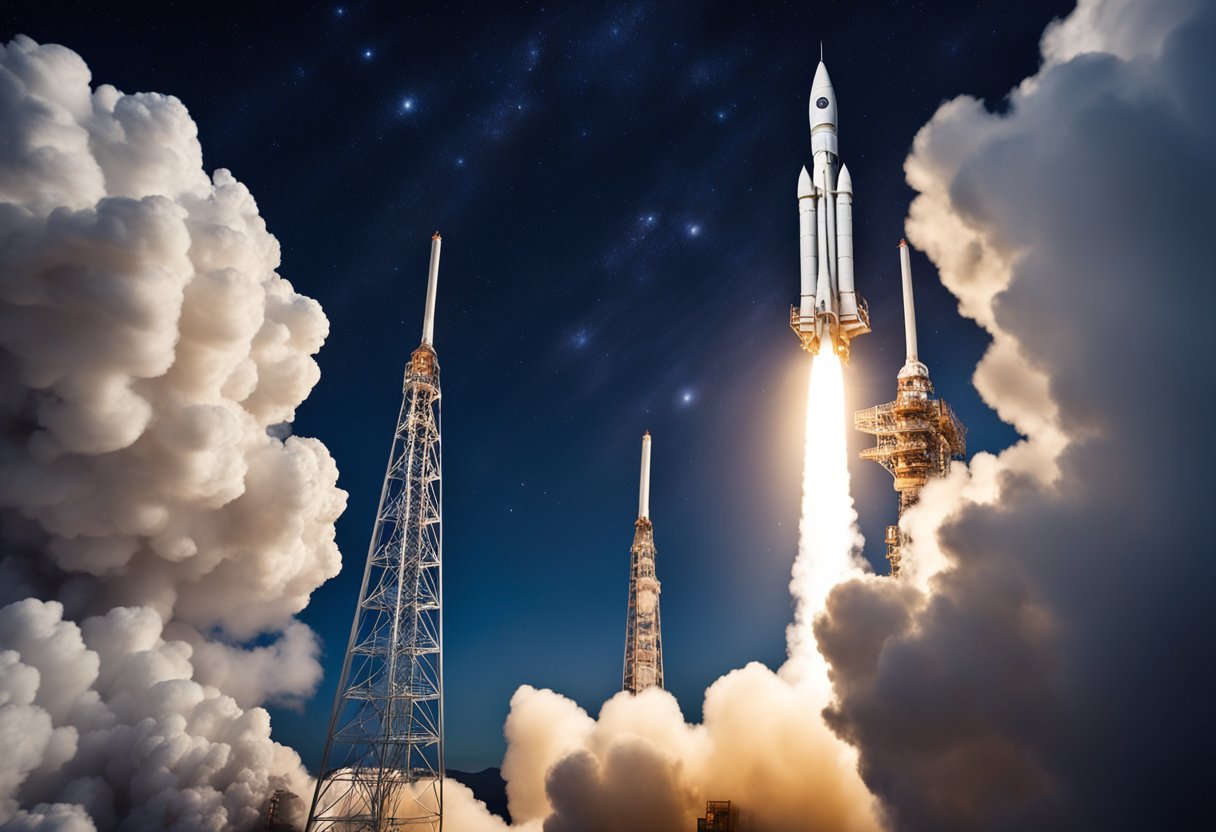
As we turn our attention to the interdependence of space assets and national security, it’s paramount to acknowledge the critical role satellites play and how emerging space strategies are shaping future conflicts.
Satellites form the backbone of our national security infrastructure, enabling services from GPS navigation and communications to weather forecasting and reconnaissance. Governments heavily rely on these assets to maintain sovereignty and ensure public safety. Furthermore, satellites contribute significantly to safeguarding various locations recognised by the World Heritage List, by providing critical data for their conservation and management.
When we consider space as a strategic domain for future conflicts, it’s clear that long-term technological advancements are vital. The future of security in space will likely require new doctrines that address both defensive and offensive capabilities. As governments develop these strategies, they’ll also have to navigate the implications of space activities on terrestrial conflicts and global security.
It’s a field in which early-stage enterprises like SpaceVoyageVentures.com operate, hinting at a future where space tourism intertwines with broader security and strategic considerations.
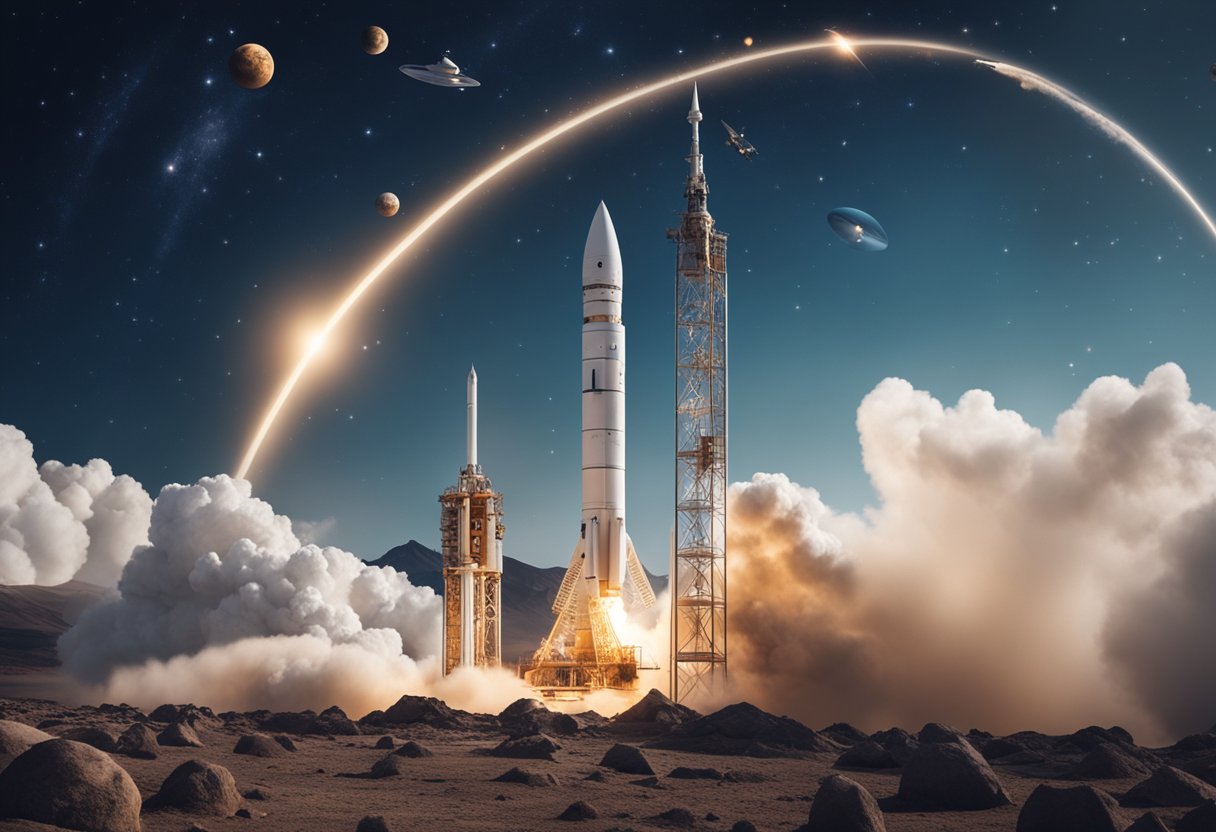
We recognise that the significance of space exploration is not merely scientific or technological; it also permeates our cultures and collective consciousness. Here, we answer some of the most inquisitive questions about the interrelationship between space achievements and cultural evolution.
Pivotal moments such as the 1969 moon landing, the deployment of the Hubble Space Telescope, and the Mars rover landings have captivated our imaginations and solidified space exploration’s role in altering our view of the universe and ourselves.
The Space Race spurred a period of intense competition and technological advancement between the USA and the USSR, igniting a cultural renaissance in science fiction and fostering a sense of global unity in the ambition of exploring beyond our planet.
Through missions and telescopic observations, we’ve discovered the vastness of the cosmos and our solar system, enabling us to reflect on the uniqueness of Earth and reconsider our responsibilities as stewards of our singular home.
Ongoing investments in space exploration, such as the recent developments in space tourism, embolden us to innovate, creating new industries and technologies that can have positive ripple effects across our economies and societies.
Achievements in space travel have been a wellspring of inspiration for artists and authors, influencing genres like space opera and afrofuturism, and infusing our culture with imagery and narratives that reflect our aspirations among the stars.
Educational programmes that elucidate space history and current ventures instil a sense of adventure and possibility in young minds, crafting a generation more invested in scientific inquiry and the potential of space exploration.